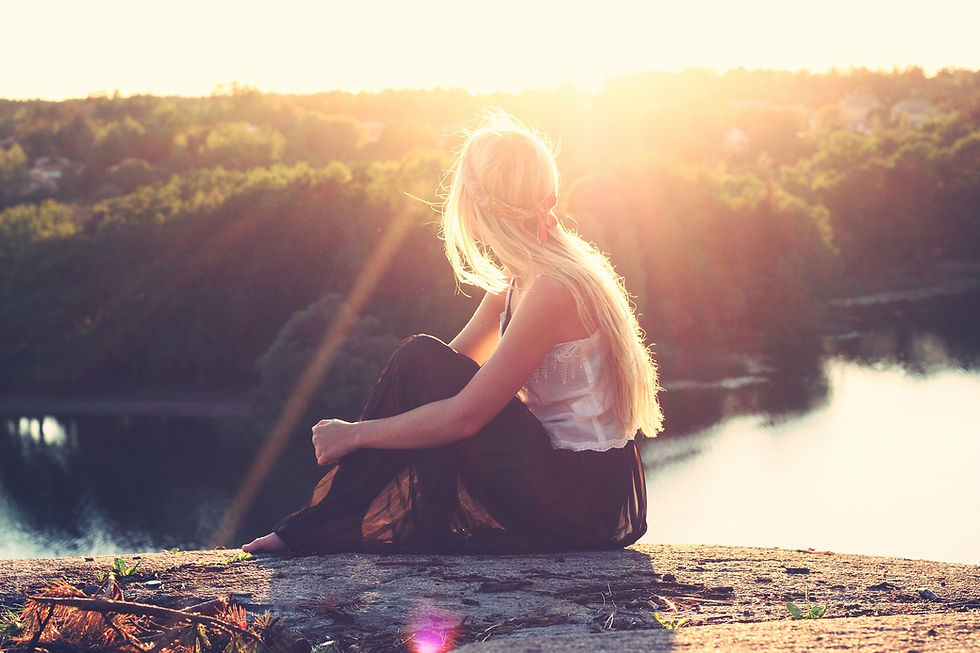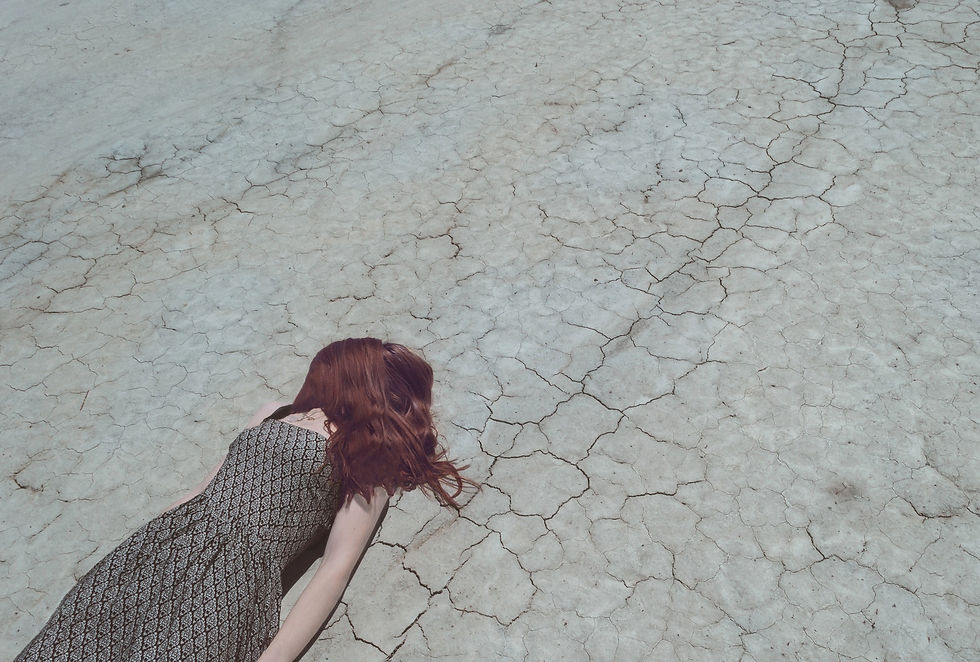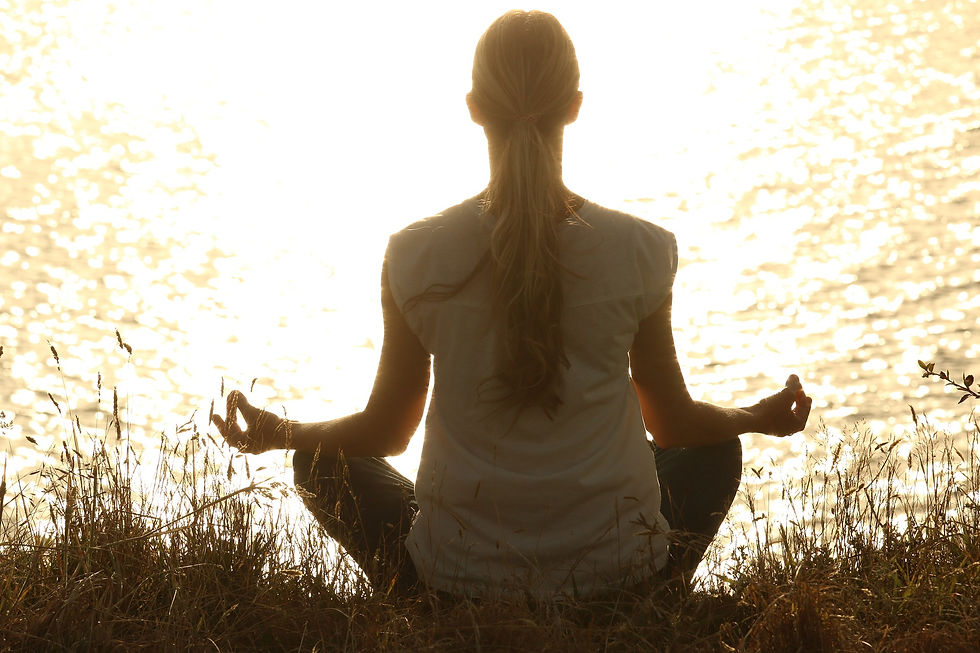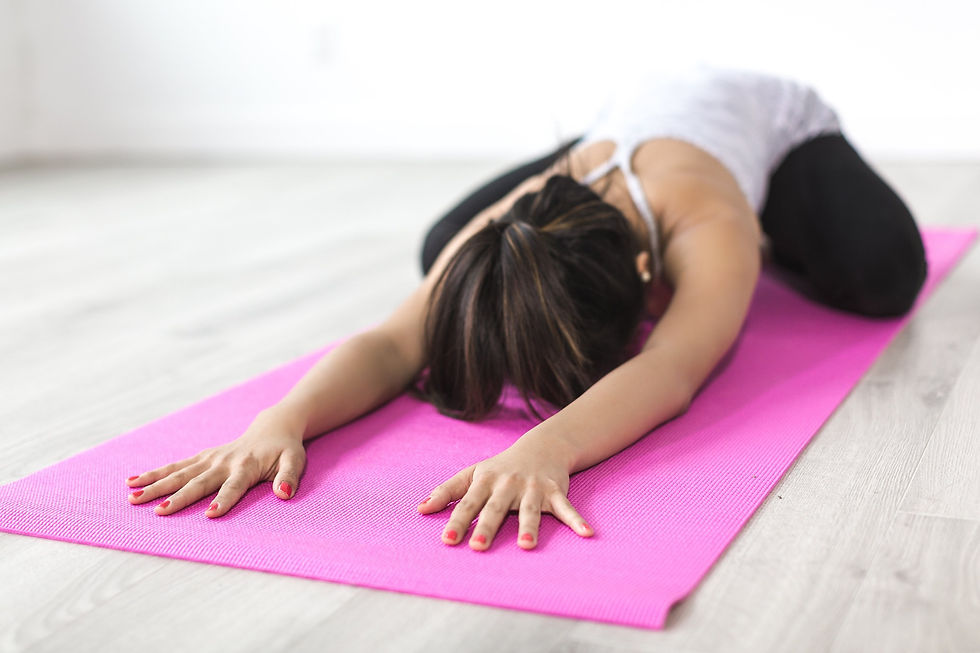Cultivating Calm
- iyurvedalife
- Jul 8, 2019
- 8 min read
A Guide to Balancing Anxiety with Ayurveda

Do you struggle with anxiety or fear? These are expressions of excess vata in mano vaha srotas (the channel of the mind). Balanced vata is credited with a number of positive mental and emotional capacities like creativity, joy, intuition, expansiveness, clairvoyance, and deep spiritual understanding. However, when aggravated vata accumulates in the channel of the mind, it tends to cause constriction—which can lead to fear, anxiety, contraction, and even loneliness. We will start by exploring how these imbalances occur in the first place, but the purpose of this article is to offer practical guidance on how to support a return to balance so that we can reclaim health and vitality throughout the mental and emotional spheres.
Like Increases Like
Ayurveda operates on the premise that like increases like, and that opposite’s balance. Vata dosha is naturally light, cold, dry, rough, mobile, subtle, and clear. Therefore, exposure to these qualities—whether through our diets, lifestyle habits, relationships, or experiences—tends to increase vata. On the other hand, vata is balanced by foods and experiences that are heavy, warm, nourishing, substantive, oily, stabilizing, and concrete (or tangible) in nature.
Balancing Anxiety

Fear and anxiety are among the most classic expressions of excess vata, and these imbalances are particularly likely to be triggered by excesses in the light, cold, and dry qualities. Therefore, using diet, lifestyle, and supportive herbs to increase our exposure to heavy, warm, and oily influences will generally serve to relieve fear and anxiety. These qualities help to ground, nourish, and lubricate aggravated vata.
When vata it aggravated, less truly is more. Consider starting with just a few simple adjustments:
Wake up at the same time from one day to the next.
Eat breakfast, lunch, and dinner at about the same times each day.
Go to sleep at a consistent time.
Choose just one or two of the below strategies to complement this foundation.
You can always add more to your routine as the anxiety settles down and your system comes into better alignment with your natural state of balance. But for the time being, biting off more than you can chew is very likely to backfire. Pay attention to those practices you are particularly drawn to and inspired by.
Mindfulness Practice
It takes both time and focused attention to re-pattern the mind, and daily practice is one of the best ways to ensure your success. Remarkably, as little as fifteen minutes per day is enough to be transformative, and committing to a daily practice will deliver results rather quickly. If you are serious about alleviating your anxiety, choose one of the following practices and commit to doing it on a daily basis:

Meditation or Prayer
Both meditation and prayer tap into the subtle channels of the mind and can help to re-pattern even our most habituated responses to challenging situations. These practices serve to clear and quiet the channels of the mind, support the flow of prana (the vital breath) throughout the system, and encourage the proper digestion of food, thoughts, and emotions—all of which can help to relieve anxiety.
Pranayama
Stimulated by and carried on the breath, prana infuses every cell and tissue throughout the body with life. Interestingly, disturbances in prana are usually directly tied to the emergence of fear and anxiety. Therefore, the practice of specific pranayamas (yogic breathing exercises aimed at balancing the movement of prana throughout the system) can be quite a potent means of calming anxiety. In general, pranayama helps to restore fluidity and vitality to the subtle energy channels of the body, releases accumulated tension, and offers deep support to the mind and the nervous system. Pranayama also activates and balances many of the most significant subtle channels influencing the mind, including mano vaha srotas (the channel of the mind), prana vaha srotas (the prana-carrying channel), ida nadi (the lunar, feminine channel), pingala nadi (the solar, masculine channel), and sushumna nadi (the central channel). Therefore, pranayama is a powerful means of accessing and resetting longstanding psycho-spiritual patterns. For a more detailed exploration of these subtle channels and their significance in the broader landscape of the body.

Yoga
Yoga positively impacts the mind in very similar ways. It moves prana in the body, helps to dissipate tension, clears stagnation, and encourages fluidity throughout the tissues, the subtle body, and the mind. Yoga also stimulates circulation, and serves as a balanced form of exercise, which is important when trying to balance anxiety. Favor vata-pacifying yoga, with a particular emphasis on restorative poses like savasana to clear accumulated vata from mano vaha srotas.
Marma Points
As one of the openings to the channel system of the mind, the marmani (precise energy points on the surface of the skin that are connected to deeper, subtle energetic pathways throughout the body) provide a particularly potent means of correcting imbalances in mano vaha srotas. One marma point that provides a simple access point for balancing anxiety is known as tala hrida marma, and is located in the palm of the hand. To find it, make a fist with your left hand and notice where the left middle finger touches the left palm, (between the second and third metacarpals); this is tala hrida.3Simply press the thumb of the right hand firmly into this marma point for about a minute to calm the mind, relieve anxiety, and support concentration.
Nasya
Nasya, the practice of applying medicated oil to the upper nasal passages, is actually seen as a way of offering a deeply influential therapy directly to the tissues of the brain. Nasya soothes the delicate tissues of the nose, fosters unobstructed breathing, relieves accumulated stress, promotes mental clarity, and generally supports the mind. Nasya Oil generally helps to pacify vata in mano vaha srotas, and has a very calming effect on the mind and the nervous system. Nasya should not be performed by pregnant or menstruating women. Otherwise, apply three to five drops into each nostril (ideally, in the morning on an empty stomach). If you are new to the practice of nasya, please see our helpful instructional video.
Abhyanga (Ayurvedic Oil Massage)
Abhyanga, the ancient practice of self-massage with oil, calms the nervous system, lubricates and rejuvenates the tissues, and promotes healthy circulation throughout the body. It is no coincidence that the Sanskrit word for oil, sneha, also means love. Abhyanga is a profound practice of rejuvenation and loving self-care that benefits both the physical body and the more subtle realms of consciousness. In addition, the oil itself forms a protective sheath around the body that can help to buffer the nervous system and the mind against undue stress or anxiety. Each morning, before a shower or bath, massage about ½ cup warm Vata Massage Oil or Organic Sesame Oil into the skin, hair, and scalp.
Simplified Oil Massage: Oil the Feet and Scalp Before Bed
If a full-bodied abhyanga is sometimes too involved, consider applying a calming oil such as Brahmi Oil or Bhringaraj Oil to the soles of the feet and (if desired) to the scalp before bed. This practice helps to relax the mind, ground the energy, and encourage sound sleep—all of which help to alleviate anxiety. Don’t forget to protect your sheets by wearing a pair of old socks and a hat (or cover your pillow with an old towel).
Ginger Baking Soda Bath
A bath relaxes the nervous system, releases tension, and helps to quiet the mind. A ginger baking soda bath helps to reduce anxiety because it is deeply vata-pacifying. The ginger and baking soda make this bath particularly soothing and heating; their qualities encourage circulation, sweating, and detoxification, and are especially helpful in offsetting the cold and dry qualities so often associated with anxiety. Simply add ⅓ cup baking soda and ⅓ cup ginger powder to a hot bath and soak for ten to fifteen minutes.5If your pitta is high, you may not want to stay in the bath as long.
By Melody Mischke banyanbotanicals.com
Other Ayurvedic Treatments to Balancing Anxiety
Ayurvedic Oil Massage (Abhyanga)

Abhyanga is a unique full body massage with the continuous, rhythmic flow of movements offered with sumptuous warm herbal infused aromatic/medicinal oils. This deeply relaxing massage works to balance the 7 layers or Marma points of the physical and spiritual body to create a sense of calm and balance. Is beneficial in many ways as it deeply penetrates the skin, and relaxes the mind and body. It encourages the absorption of impurities by stimulating the arterial, venous and lymphatic circulations. As a result, Abhyanga enhances the delivery of nutrients to the cells and removes the stagnant waste (ama) that is in the body. Furthermore, it helps in the movement of the ten vayus, which allow eliminating the blockage in the nadis (subtle energy in the body). Once the nadis paths are clear, healing on both physical and spiritual levels can be manifested easier within the body.
The Abhyanga Therapy Ritual as prescribed in Ayurveda medicine, and intended to open up the minor srotas, remove ama (toxins) through the skin, melt kleshma (fat secretions blocking the srotas), and cleanse and moisturize the skin. But Abhyanga can also be used to soothe a vata imbalance which will bring deep relaxation to the body and a peaceful mind. Abhyanga lessens fatigue and provides energy through increased circulation and regeneration.
Some of the traditional benefits of Abhyanga treatments include:
• Superb after a long flight to restore energy and vitality that have lessened.
• Removes fatigue and stress from work and life overall and Relieves insomnia.
• Stimulates antibody production and thus strengthens the immune system.
• Reverses prevent aging and increase longevity.
• Oil rubbed into the skin prevents dehydration and strengthens the nerves.
• The body becomes firm and free from disturbances of vata – that otherwise prematurely age the body and cause pain.
• Body parts are trimmed and skin becomes silky soft. Srotas ⋆ Tri Health Ayurveda.
The human body is composed of innumerable channels that supply the various tissues of the body. The Sanskrit word for such channels is srotas, with the plural being srotamsi. Health consists of the proper flow through these channels.
Mind/Scalp Treatment (Shirodhara)

Shirodhara is a form of Ayurveda therapy that involves gently pouring liquids over the forehead and can be one of the steps involved in Panchakarma. The name comes from the Sanskrit words Shiro (head) and dhara (flow). Unique in simplicity, yet extraordinary in results, this restorative body relaxation with the application of warm aromatic herbal oil to seven Marma points imbues a sense of calm and wellness. Shirodhara is the pouring of oils to the forehead, or Sixth Chakra, in a rhythmic sequence to quiet mental chatter and encourage sound sleep. Shirodhara therapy (scalp/mind treatment) consists of a thin and soft stream of prepared medicinal oils streamed down the crown reaching sensitive points on the forehead, the third eye, and cranial area that is connected with the nervous system. This process magnifies the senses, disperses negative electrical impulses that accumulate in the forehead because of stress, reverses imbalances within the body and rejuvenates the face and calms the nervous system. The patient will feel very relaxed; the mind will be tuning into a state of meditation, experiencing a heavy body sensation and in some cases instantly activating the third eye by experiencing visions and receiving messages from your higher self/spiritual guides.
Some great benefits:
• Counteracts the Effects of Stress
• Reduces Anxiety
• Awakens Intuition
• Improves Sleep Quality
• Pacifies the Doshas
Herbal Baths (Swedana)

Swedana is an individualized herbal steam bath. Swedana is a unique treatment where the head and the area of the heart are kept cool during the steam bath while the body is heated to remove impurities found deep within the tissues. In this technique, you will be seated; the Swedana treatment includes various forms of heat therapies which may be done damp or dry, locally or for the whole body. The process opens the tissues of the body with heat saturation and medicinal plants. When the tissues open, toxins or ama, deep-seated in the body, can be expelled out of the skin. This helps reduce inflammation, promotes healing, and improves blood circulation and restoration. The treatment is not appropriate for people with heart disease or hypertension as the heat may cause an increase in heart rate and blood pressure, is a full body herbal steam or Bashpa Swedana.
This is a full body herbal steam therapy and is given after abhyanga (full body oil massage) is completed in order to increase the benefits of therapy. Through this process, oil gets deeper into the skin and dislodges deep rooted toxins (ama) in the layers of the skin.
All these three treatments are available at iYurveda Life in Miami, if you would like to book an appointment contact Ivy Soteldo, Ayurvedic Body Therapist & Reiki Practitioner at 954-802-6893 or visit www.iyurveda.life to book an appointment.










Comments